Ask Ethan: If Dark Matter Is Everywhere, Why Haven’t We Detected It In Our Solar System?
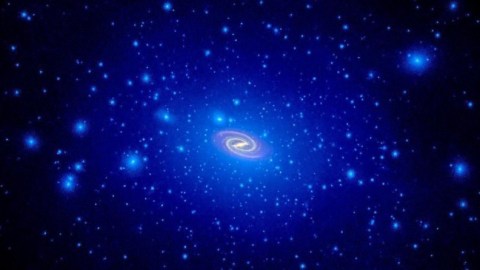
It’s the first, most naive question you might think to ask. The solution is a lot more complicated than you imagine.
According to a large amount of evidence, the overwhelming majority of the Universe is made out of some mysterious type of mass that we’ve never directly measured. While protons, neutrons, and electrons — and for that matter, all the matter made out of particles from physics’ Standard Model — make up the planets, stars, and galaxies we find throughout the Universe, they compose only 15% of the Universe’s total mass. The rest is made out of something entirely different: cold dark matter. But if this dark matter is everywhere and so abundant, why haven’t we seen it in our Solar System? That’s the question of Bob Lipp, who wants to know:
All the evidence for dark matter and dark energy seem to be way out there in the cosmos. It seems very suspicious that we don’t see any evidence of it here in our own solar system. No one has ever reported any anomaly in the orbits of the planets. Yet these have all been measured very precisely. If the universe is 95% dark, the effects should be locally measurable.
Should this be so? This was one of the first thoughts I had when I first learned about dark matter, some 17 years ago. Let’s investigate and find out the truth.
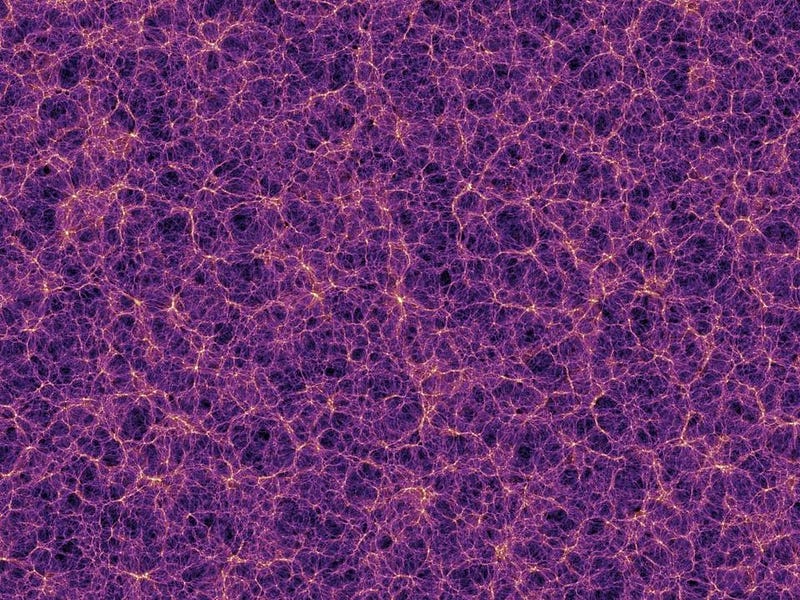
The big idea of dark matter is that, at some point in the very young Universe, before we formed galaxies, stars, or even neutral atoms, there was an almost-perfectly smooth sea of dark matter spread throughout it. Over time, gravitation and the other forces work through a series of interrelated steps:
- all the matter, normal and dark, gravitationally attracts,
- the regions with above-average density grow, preferentially attracting both types of matter,
- the radiation pushes back against the normal matter, colliding with it,
- but not the dark matter, at least, not in the same way.
This creates a very particular pattern of overdensities and underdensities in the Universe; a pattern which is revealed when we look at the Cosmic Microwave Background (CMB).
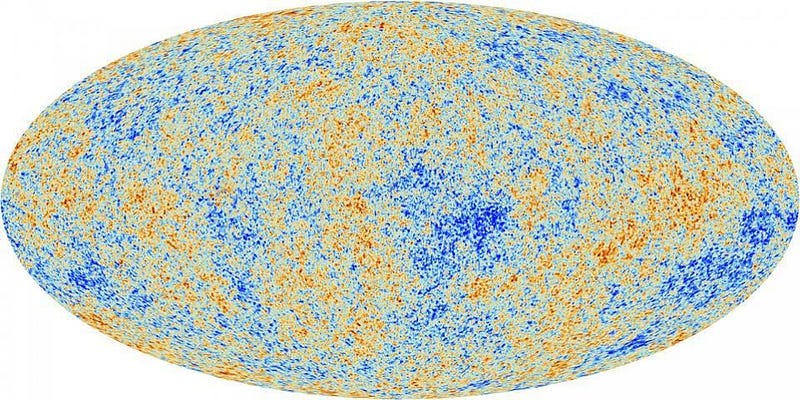
The CMB is the leftover glow from the Big Bang: the radiation that travels straight to our eyes from the moment neutral atoms first stably form. What we see, today, is a snapshot of the Universe as it transitions from an ionized plasma to an electrically neutral set of atoms: where that radiation pushback becomes negligible. The cold spots correspond to overdense regions, as the radiation has to spend extra energy (over the average) to climb out of the gravitational well it’s in; the hot spots are similarly underdense regions.
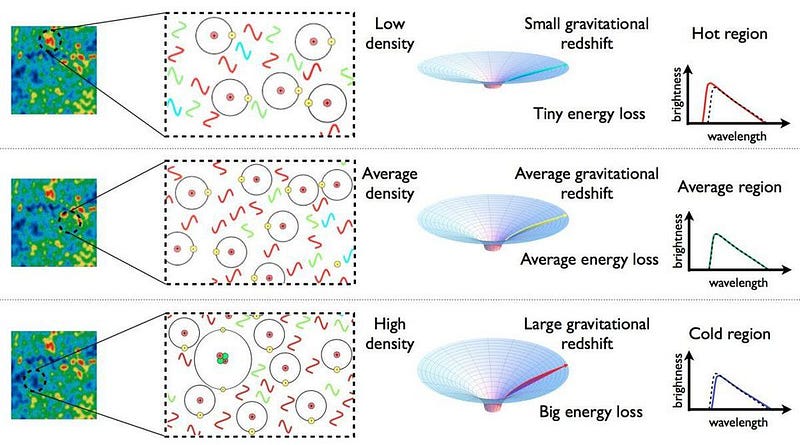
The pattern of cold spots and hot spots on all the scales we can observe, as well as how they correlate, tell us what the Universe is made of: 68% dark energy, 27% dark matter, and 5% normal matter. Over time, then, those overdense regions will grow into stars, star clusters, galaxies, and galaxy clusters, while the underdense regions will give up their matter to the denser regions surrounding them. Although it’s only the normal matter that we can see, due to its production of and interaction with light and other forms of radiation, the dark matter is the dominant force responsible for the gravitational growth of structure in the Universe.
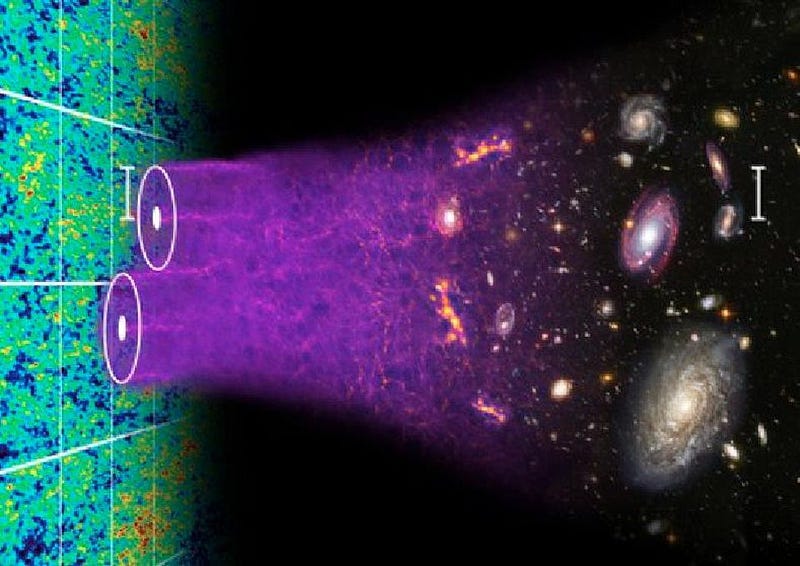
Because normal matter also interacts with itself, gravitational collapse behaves differently for normal matter than for dark matter. When a clump of normal matter gravitates, it begins to collapse. The collapse occurs along the shortest dimension first, but normal matter interacts and collides with other particles of normal matter, the same way your hands, even though atoms are mostly empty space, “clap” together when you attempt to pass them through one another. This creates a disk of matter, which then rotates: this is the origin of everything from disk (spiral) galaxies to solar systems which have their planets orbiting in a plane. The dark matter, on the other hand, doesn’t collide with either itself or with normal matter, meaning it remains in a very large, extremely diffuse halo. Even though there’s more dark matter than normal matter, its density in, say, our galaxy, is much lower where objects like stars are found.
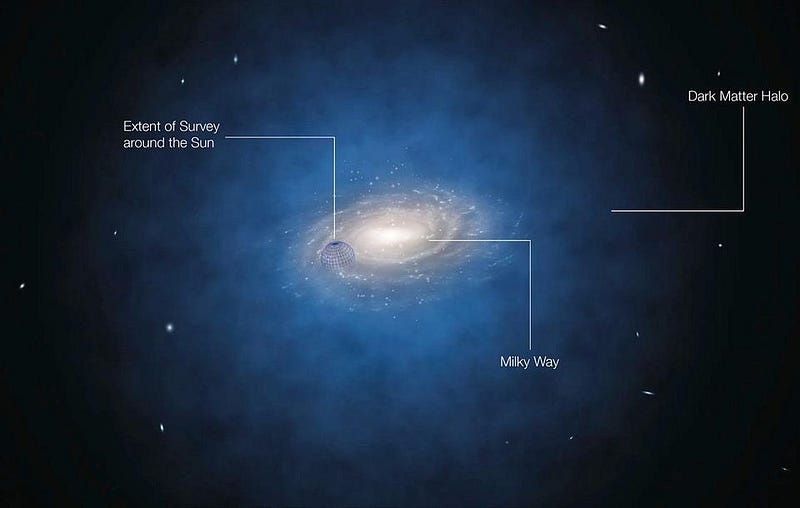
So now, we come to the big question. What about dark matter’s effect on the Solar System? A huge part of what you’re probably thinking is true: we should have dark matter particles flying through space everywhere, including throughout our Milky Way. It means there should be dark matter in our Solar System, in our Sun, passing through our planet, and even in our bodies. The big question you need to ask is this: compared to the masses of the Sun, the planets, and the other objects in our Solar System, what is the relevant, interesting mass due to dark matter?
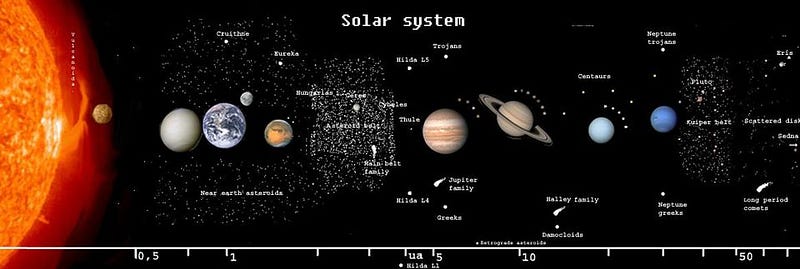
To answer this, we need to first understand what determines the orbits of objects within our Solar System. The Sun is, by far, the dominant mass in the Solar System. To an outstanding approximation, it determines the orbits of the planets. But for Venus, the planet Mercury is interior to it; to a first approximation, Venus’ orbit is determined by the combined masses of the Sun plus Mercury. For Jupiter, its orbit is determined by the Sun plus the inner, rocky planets and the asteroid belt. And for any orbiting object in general, its orbit is determined by the total mass enclosed by an imaginary sphere centered on the Sun, with that object at the edge of the sphere.

If there’s a sea of dark matter that permeates space where we are — all through the Solar System — the outer planets should see a slightly different (greater) mass than the inner planets. And if there’s enough dark matter, it should be detectable. Because we know the mass of the Milky Way, the relative densities of normal and dark matter, and we have simulations that tell us how the dark matter density ought to behave, we can come up with some very good estimates. When you do these calculations, you find that about 10¹³ kg of dark matter ought to be felt by Earth’s orbit, while around 10¹⁷ kg would be felt by a planet like Neptune.
But these values are tiny compared to the other masses of consequence! The Sun has a mass of 2 × 10³⁰ kg, while Earth is more like 6 × 10²⁴ kg. Values like the one we came up with, in the 10¹³ — 10¹⁷ kg range, are the mass of a single modest asteroid. Someday, we may understand the Solar System well enough that such tiny differences will be detectable, but we’re a good factor of 100,000+ away from that right now.
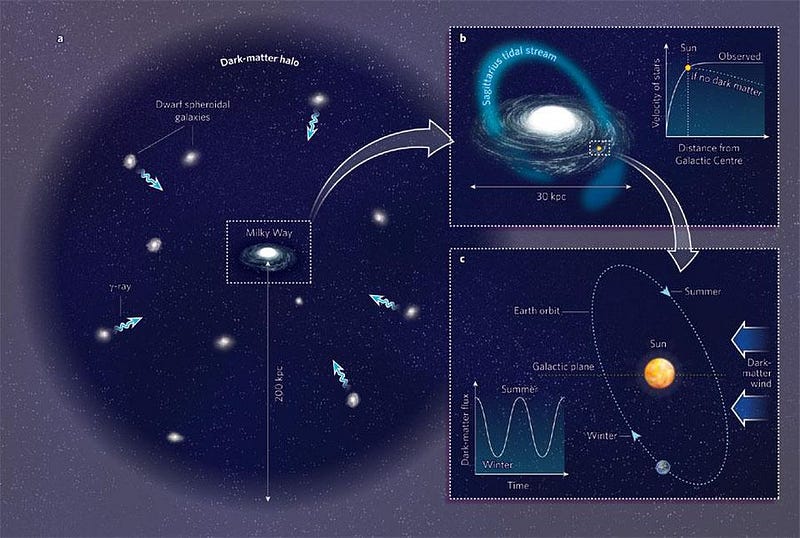
In other words, dark matter should be present in the Solar System, and it should disproportionately affect the motion of the outer planets relative to the inner ones, based on the amount of mass enclosed by a sphere centered on the Sun at the planet’s radius. You might wonder, based on the arrangement of the Solar System, if many-body interactions between dark matter, a planet, and the Sun could cause additional dark matter to be captured by the Solar System. This was a fun problem, and was the topic of a paper I co-wrote some 10 years ago. What we found was that the density of dark matter can be greatly enhanced, but only if you don’t consider that what gets captured is likely to get very quickly re-ejected again. Even at that, the maximum possible value today, after 4.5 billion years (in purple), is still below the best observational constraint.
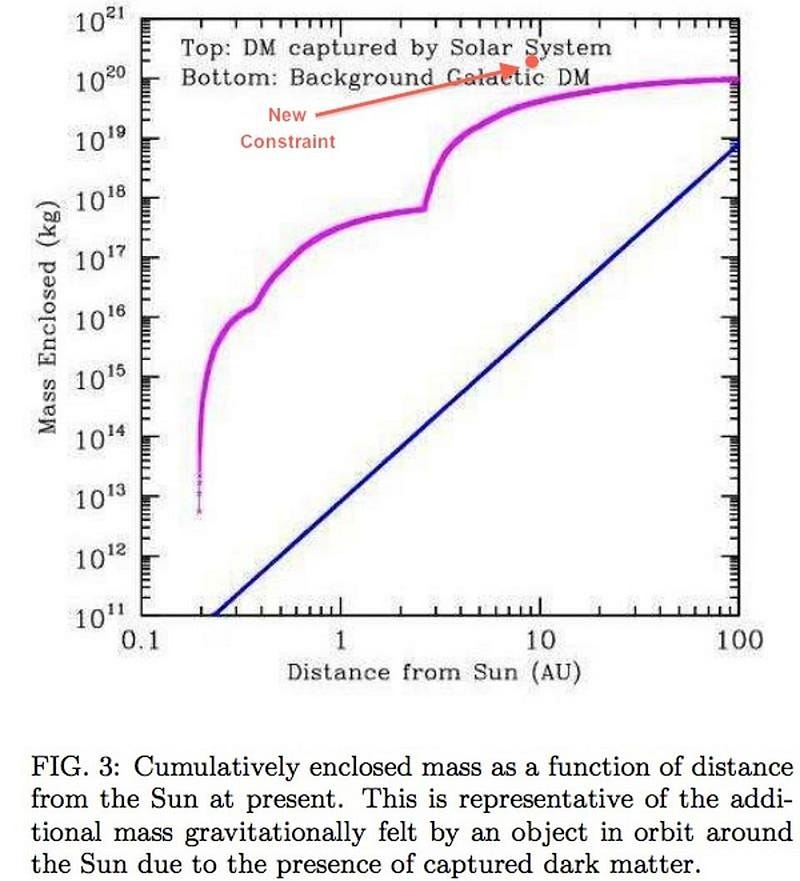
We do have dark matter in our Solar System, and it ought to have real effects on every other particle of matter around it. If there’s any interaction cross-section between normal matter particles and dark matter particles, then direct detection experiments should have a chance to discover it right here on Earth. And even if there isn’t, the gravitational effects of the dark matter passing through the Solar System, both gravitationally captured and gravitationally free, should affect the orbits of the planets. But until our measurements become more and more precise, there simply isn’t enough of a gravitational effect to result in anything detectable. For the meantime, we have to look to the Universe beyond, not our own Solar System, to see dark matter’s effects on spacetime.
Send in your Ask Ethan questions to startswithabang at gmail dot com!
Ethan Siegel is the author of Beyond the Galaxy and Treknology. You can pre-order his third book, currently in development: the Encyclopaedia Cosmologica.




